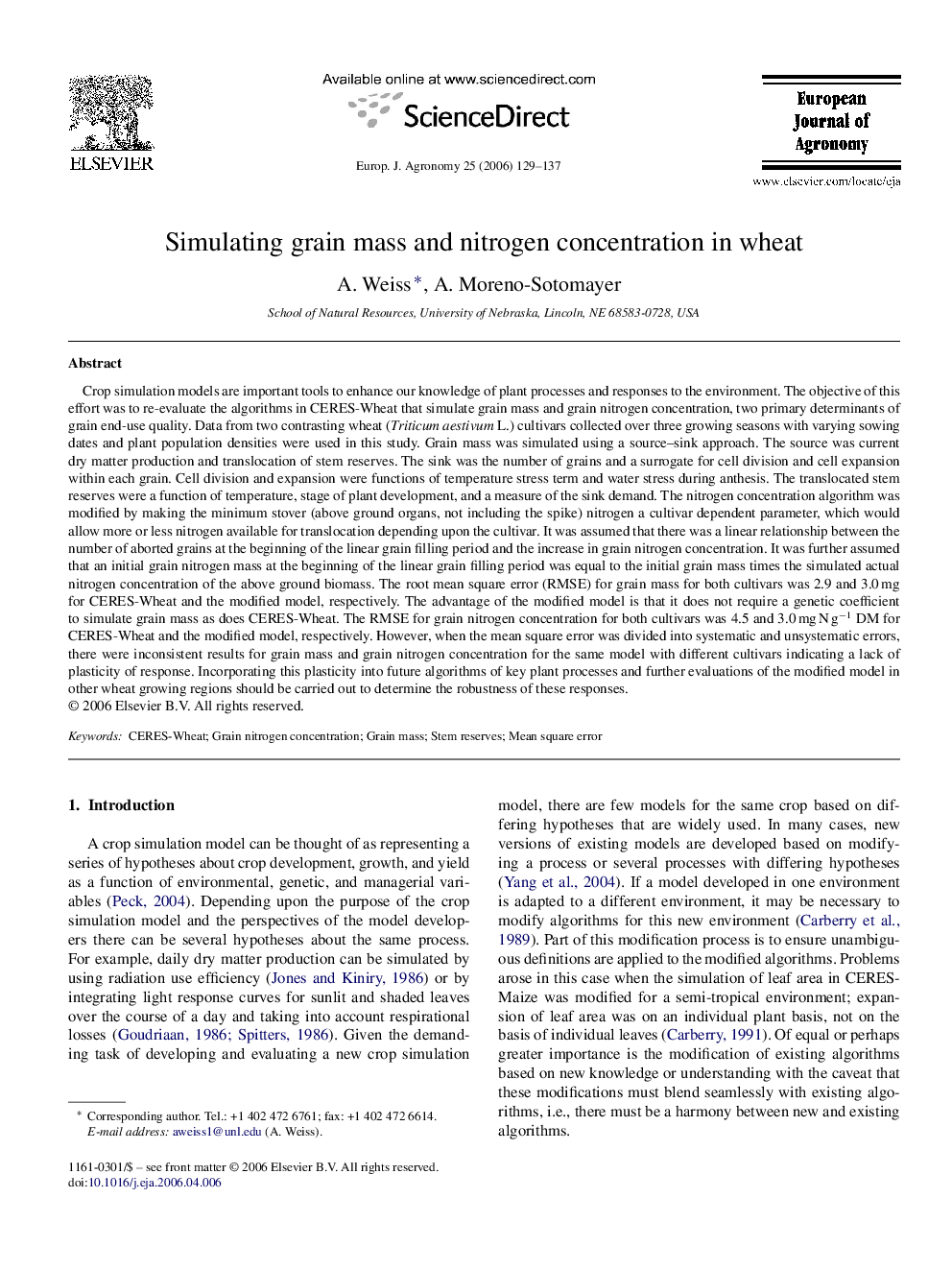| کد مقاله | کد نشریه | سال انتشار | مقاله انگلیسی | نسخه تمام متن |
|---|---|---|---|---|
| 4509712 | 1624530 | 2006 | 9 صفحه PDF | دانلود رایگان |

Crop simulation models are important tools to enhance our knowledge of plant processes and responses to the environment. The objective of this effort was to re-evaluate the algorithms in CERES-Wheat that simulate grain mass and grain nitrogen concentration, two primary determinants of grain end-use quality. Data from two contrasting wheat (Triticum aestivum L.) cultivars collected over three growing seasons with varying sowing dates and plant population densities were used in this study. Grain mass was simulated using a source–sink approach. The source was current dry matter production and translocation of stem reserves. The sink was the number of grains and a surrogate for cell division and cell expansion within each grain. Cell division and expansion were functions of temperature stress term and water stress during anthesis. The translocated stem reserves were a function of temperature, stage of plant development, and a measure of the sink demand. The nitrogen concentration algorithm was modified by making the minimum stover (above ground organs, not including the spike) nitrogen a cultivar dependent parameter, which would allow more or less nitrogen available for translocation depending upon the cultivar. It was assumed that there was a linear relationship between the number of aborted grains at the beginning of the linear grain filling period and the increase in grain nitrogen concentration. It was further assumed that an initial grain nitrogen mass at the beginning of the linear grain filling period was equal to the initial grain mass times the simulated actual nitrogen concentration of the above ground biomass. The root mean square error (RMSE) for grain mass for both cultivars was 2.9 and 3.0 mg for CERES-Wheat and the modified model, respectively. The advantage of the modified model is that it does not require a genetic coefficient to simulate grain mass as does CERES-Wheat. The RMSE for grain nitrogen concentration for both cultivars was 4.5 and 3.0 mg N g−1 DM for CERES-Wheat and the modified model, respectively. However, when the mean square error was divided into systematic and unsystematic errors, there were inconsistent results for grain mass and grain nitrogen concentration for the same model with different cultivars indicating a lack of plasticity of response. Incorporating this plasticity into future algorithms of key plant processes and further evaluations of the modified model in other wheat growing regions should be carried out to determine the robustness of these responses.
Journal: European Journal of Agronomy - Volume 25, Issue 2, August 2006, Pages 129–137